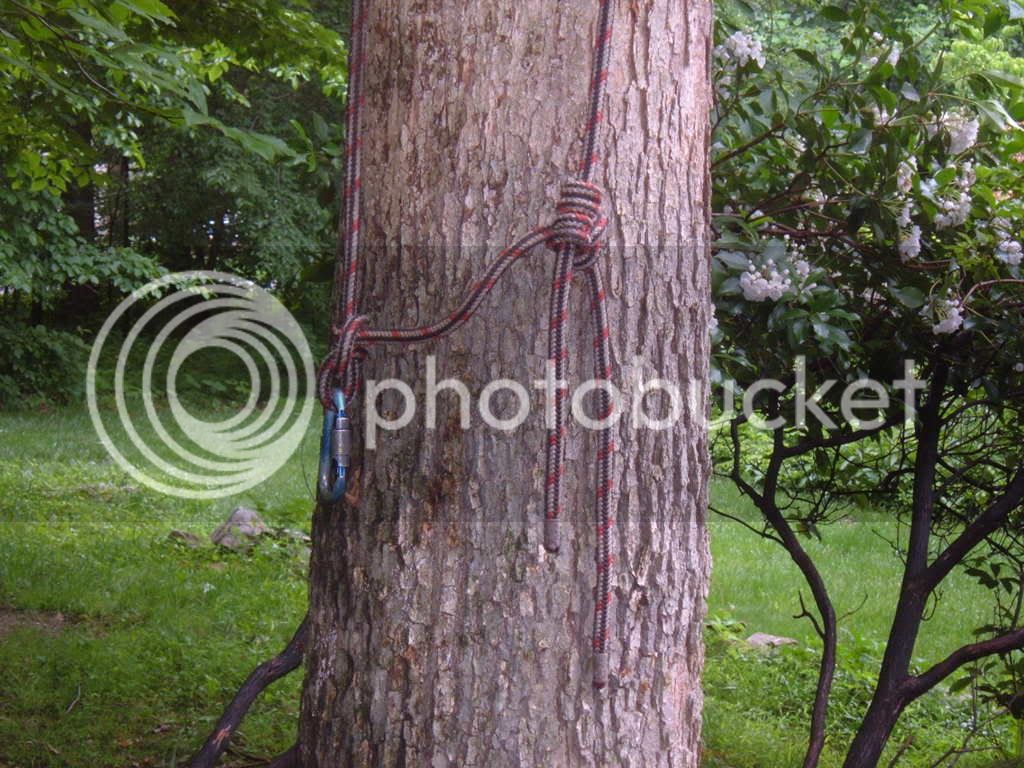TM, I, too, make my living by climbing trees and, therefore, interested in your very well-informed opinion.
Trust me, an opinion is all that it is.
To start clear, I don't subscribe to the seriously ingrained need to have the system go instantly both up and down. That system, at best, does up fairly well and it does down fairly well.
My 'philosophy' , if you will, was to choose a device that does
UP at the highest levels mankind has yet achieved, and choose another device that does
DOWN and around exceedingly well, and that you let one do one, and another do the other,
with a lot of crossover territory in between.
In other words, there's almost the entirety of the time in the crown where you are either going up or moving around & work positioning or down and around and work positioning. There is but a
fraction of the job (generally speaking) where it is
either ascent OR descent. Most time is spent where it could boil down to a coin toss to whether you stay on 'ascent/move around the crown' and work, or change over to 'descent/move around the crown' and work. Most times, I'll go with whatever mood I happen to be in in the moment. Either is an exceptional choice, again, generally speaking.
Once you get up into the crown, you can switch over to 'descent/move around the crown' mode only at the end of the job when you're gonna drop out. Or apply it whenever you need it, like when you have to drop through a natural fork way out to descend down onto a roof. At this point I would switch over to 'descent/move around the crown' mode, abseil down onto the roof, power blow the roof and eventually, slap 'ascent/move around the crown' back on and head on back up through that fork or whatever.
The down does
down exceedingly well, and the up does
up exceedingly well. Personally, I don't want one device that does it all. I want
two devices that when used in an aerial system together compliment each other like a greater than the sum of the parts deal.
That's where I'm coming from.
Not that the Unicender is not a great tool, it
is a great tool, it's magnificently engineered and time-tested and trusted as a unique and righteous piece of kit. But I can blow a major hole in my production climbing performance by accepting the unicender's one major drawback; it doesn't have a comfortable grip handle. That means my hands work the rope a lot, which they do anyway, don't get me wrong, but having an excellent ergo-grip handle is another way I 'cheat'. Dual ascenders allow the grip on 11 mm line to be ~22 mm across. Again, I cheat. Footlocking on 22 mm of twin line is astounding, I almost feel guilty that ascending is so amazingly easy, I almost feel like I'm cheating going up in 1:1 fashion..... but wait,.... 2:1 is just a matter of pulling one of the two ropes, one moves the other stays anchored, there's some cake and you can eat it too. You have options. Whatever works best in the moment you're in, able to accomodate ANYTHING while up in a tree.
Help, I'm falling off my soapbox.....
:angrysoapbox::angrysoapbox::angrysoapbox::angrysoapbox:
Please don't experience me as a know-it-all, because I don't. There are a variety of ways, as we've shown, to ascend, move about, work position and descend. All I want is a 1:1 system with
safety as item #1 and
easy slack tending as Item #2. So far my ascent has
no slack tending at all, which is really nice (I cheat badly here), and the 'descender/move around the canopy' device,
being 1:1 also, is
half what a friction hitch system to begin with, so all we need is a device that passes up line through it with near-effortless ease, and controls friction confidently on the down.
This is just one guy's approach. I know how to use friction hitches, etc., but I shoot for the most efficient, effective means possible to win my daily matches against gravity. I cheat right down to the rubber palmed grip gloves. I've just refused the convention of 2:1 climbing and live in a 1:1 existence. I will seek every advantage I can and settle for nothing less because when a climbing schedule is 40-70 hours a week, you need every bit of help you can get.
I have been called a black sheep, even by my own family, it doesn't mean anyone's right or wrong, just different.

























































 ha ha.
ha ha.